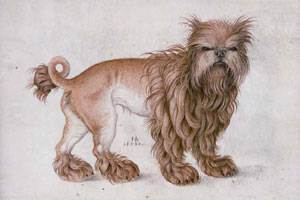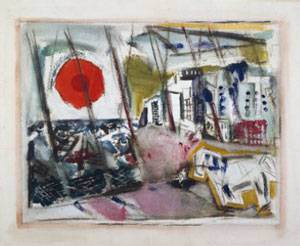
Dame Barbara Hepworth, Pelagos, 1946. Part painted wood and strings, 43 x 46 x 38.5 cm. London, Tate. Photo © Tate, London 2010. © Bowness, Hepworth Estate

Anthony Caro, Early One Morning, 1962. Painted steel and aluminium, 289.6 x 619.8 x 335.5 cm. Tate, London. Photo John Riddy /
© Tate, London 2010. © Barford Sculptures Ltd/The artist
Modern British sculpture at the Royal Academy In 2011, the Royal Academy of Arts presents the first exhibition for 30 years to examine British sculpture of the twentieth century. The show represents a unique view of the development of British sculpture
22 January – 7 April 2011
]]>
Source: Royal Academy of Arts
The exhibition will take a fresh approach, replacing the traditional survey with a provocative set ofjuxtapositions that will challenge the viewer to make new connections and break the mould of oldconceptions.
Key British works include: Alfred Gilbert Queen Victoria, Phillip King Genghis Khan, Jacob Epstein Adam, Barbara Hepworth Single Form, Leon Underwood Totem to the Artist, Henry Moore FestivalFigure, Anthony Caro Early One Morning, Richard Long Chalk Line, Julian Opie W and Damien HirstLet’s Eat Outdoors Today.
Through these and other works, the exhibition will examine British sculpture’s dialogue within abroader international context, highlighting the ways in which Britain’s links with its Empire,continental Europe and the United States have helped shape an art that at its best is truly internationalin scope and significance. The selection of works is not limited to the British Isles, but looks outwardat Britain in the world including sculpture from Native American, Indian, and African traditions. Thesewill be represented by a series of significant loans from the British Museum and the V&A, which willbe shown alongside modern British sculptures from the period 1910-1930 to highlight theinquisitiveness of British artists when the Empire was at its peak and London was, almost literally, thecentre of the world. The visitor will be invited to make comparisons between these pieces and considerthe dramatic effect that non-western techniques, iconography and cultural sensibility had on thedevelopment of British sculpture at the beginning of the twentieth century.
The exhibition will provide a view onto this period of modern British sculpture without attempting tobe comprehensive or definitive in its treatment of the subject. As such, it will represent a point of viewabout the work of the period and seek to highlight certain ways of looking at sculpture by thinkingabout its relationship with the wider world.
Follow us on:


